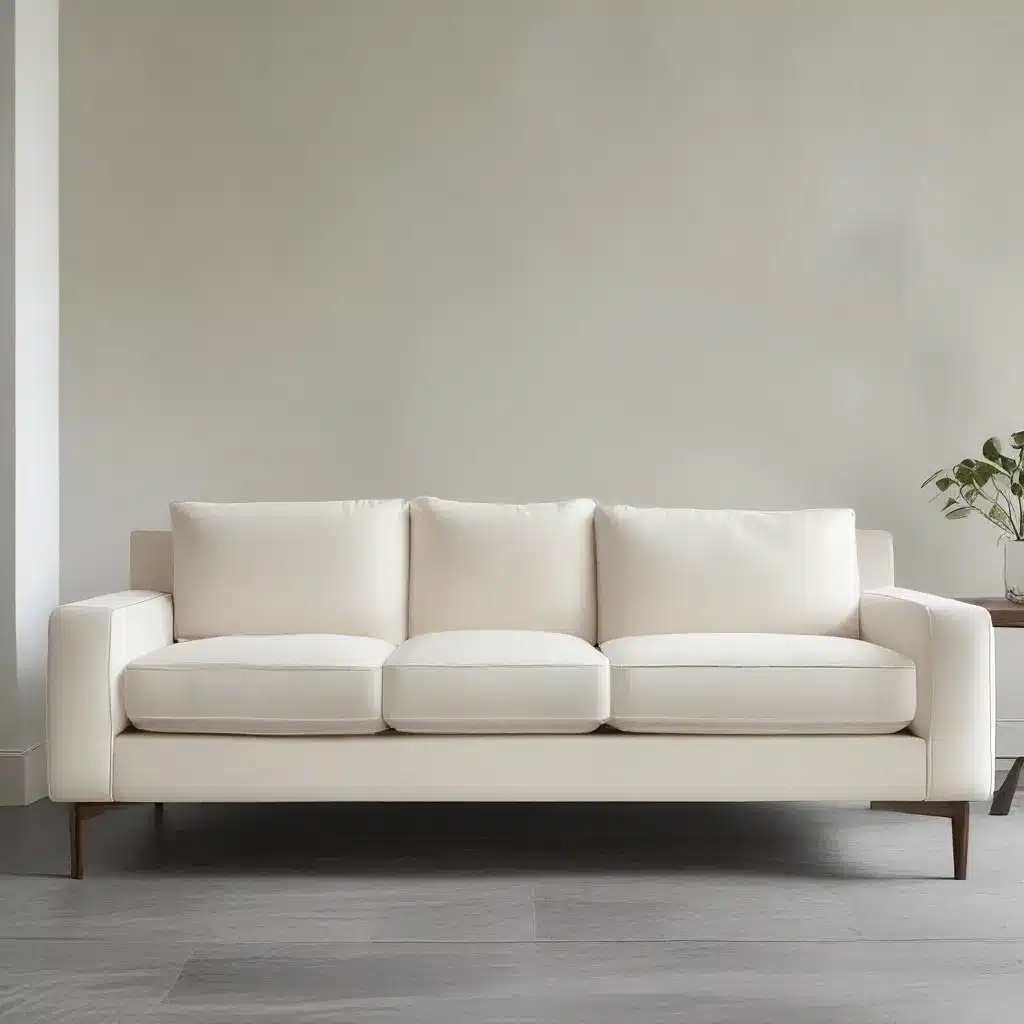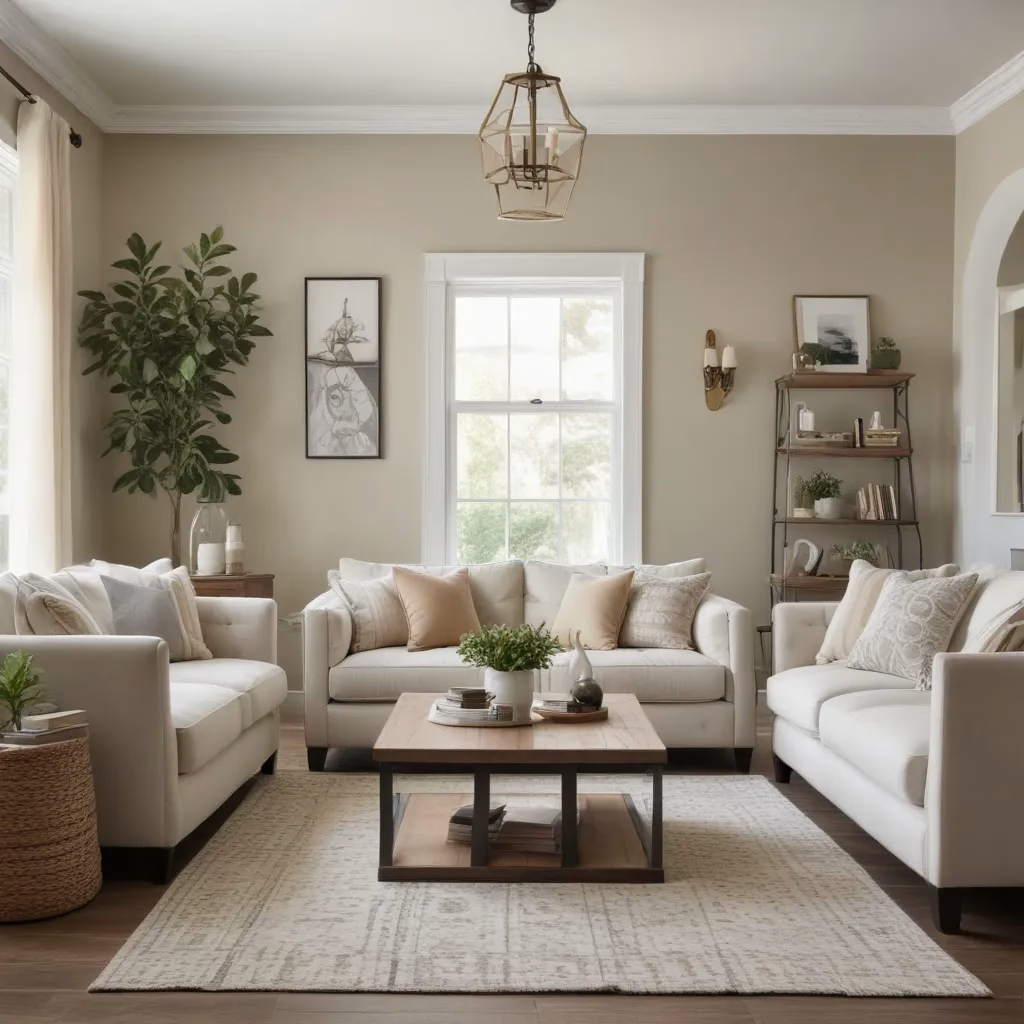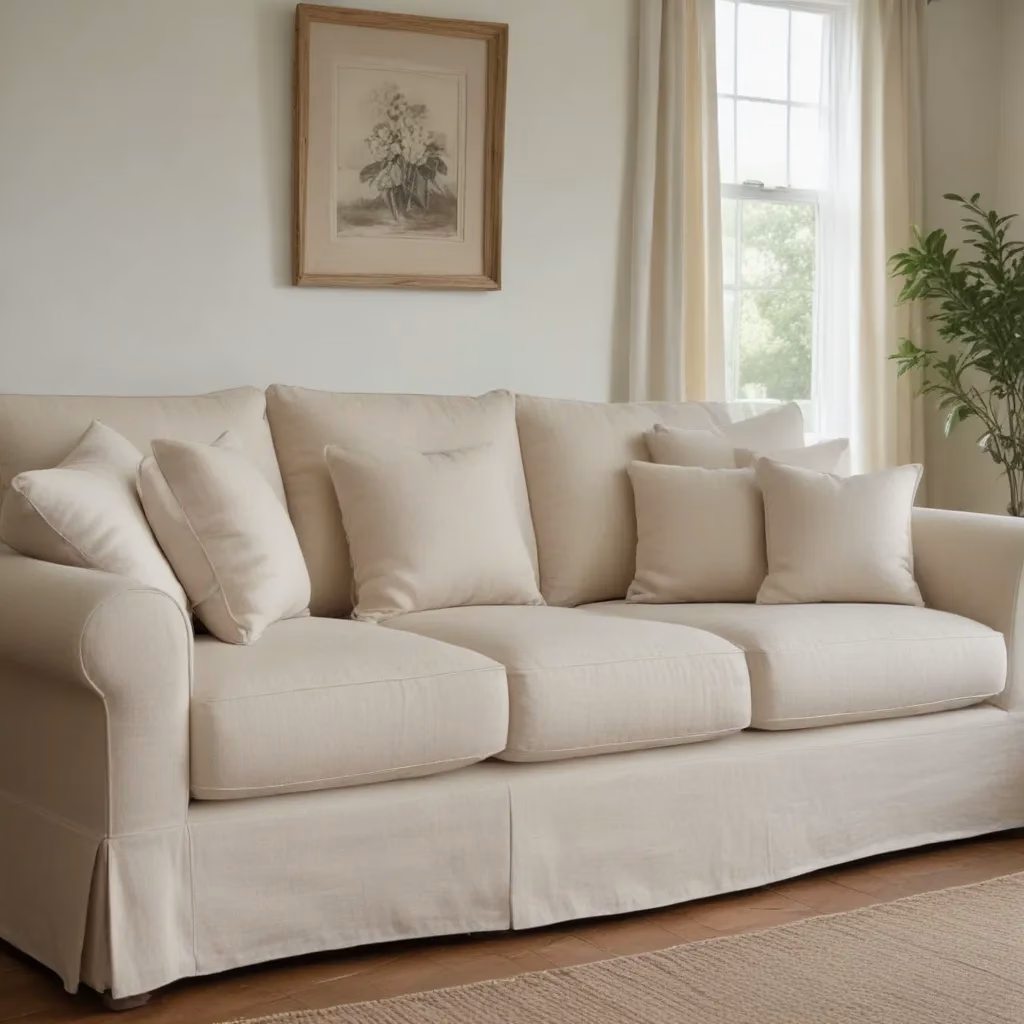The Humble Beginnings of a Homemade Couch
You know, I used to think that building your own sofa from scratch was just one of those pipe dreams – something only the most hardcore DIY enthusiasts would even attempt. But a few years back, I found myself in a bit of a furniture conundrum that led me down an unexpected path.
I had just moved into a new place, and it was the first time I’d ever had the pleasure of furnishing a space all my own. Coming from a tiny studio apartment, I didn’t have much in the way of belongings, let alone any proper furniture to speak of. No bed frame, no dining table – heck, the only thing I had was a trusty computer chair and a table to put my laptop on.
As I set out to furnish this new abode of mine, I quickly realized just how expensive quality sofas could be. Prices ranging from £600 to £2,000, with the designs I was drawn to usually landing on the higher end of that spectrum. That’s when a lightbulb went off in my head – why not try making my own sofa?
The Sofa-Making Journey Begins
Now, I’ll be the first to admit that I’m no master carpenter or upholstery expert. In fact, I’d never even attempted a project like this before. But as I started digging into the world of DIY furniture-making, I was surprised to find that there wasn’t a ton of readily available information out there. Sure, I could find the occasional blog post or tutorial, but comprehensive guides with all the nitty-gritty details? Those were a bit harder to come by.
Undeterred, I dove in headfirst, determined to document my research and learnings so that maybe, just maybe, someone else in a similar predicament could benefit from my experience. Because let me tell you, there’s a lot that goes into crafting a sofa from the ground up – things I certainly didn’t anticipate when I first had that clever idea.
Navigating the Traditional vs. Modern Sofa Divide
One of the first key decisions I had to make was whether I wanted to go the traditional route or the more contemporary approach. Traditional couches, you know, the vintage ones with all the intricate carvings and floral designs? Those require a whole different set of skills when it comes to upholstery and woodworking. And let’s just say that sewing and power tools aren’t exactly my strong suit.
So, for the sake of simplicity (and my own sanity), I decided to focus on a modern sofa design. The kind with clean, straight lines and a more minimalist aesthetic. These types of sofas tend to have a bit more of a modular construction, which means the cushions and springs are separate components. That way, if something does happen to wear out over time, you can replace just that one piece rather than having to redo the entire couch.
Uncovering the Secrets of Sofa Support Systems
Now, as I started to really dive into the nitty-gritty of sofa-making, I quickly realized that the foundation of a comfortable, long-lasting seat isn’t just about the frame and the fabric. Nope, it all comes down to what’s happening underneath those plush cushions.
There are a few different methods for providing that all-important support system. The first is webbing, which involves weaving a series of semi-elastic bands across the frame. It’s a relatively inexpensive option, but the experts generally advise against it, especially if you plan on having the sofa get a lot of, shall we say, “enthusiastic” use.
The other route is good old-fashioned springs. You’ve got your basic S-springs, which are those wavy steel things you can see if you flip over most standard sofas. Then there’s the high-end eight-way tied spring system, where each coil is individually attached to the frame in eight different directions. This gives you that wonderfully supportive, bouncy feel – but it also comes with a hefty price tag.
In the end, I decided to go with the webbing approach. After all, I was on a bit of a budget, and I figured as long as the sofa wasn’t going to be subjected to constant jumping or wrestling matches, the webbing would do the trick. Of course, I made sure to really stretch and secure those straps, learning the hard way that you can’t just rely on brute strength to get the job done.
Sizing Up the Perfect Sofa Proportions
Another crucial element I had to consider was the overall dimensions of my custom couch. Now, there are some general guidelines out there – the typical three-seater sofa is around 85 inches long, 35 inches deep, and 35 inches high. But of course, everyone’s got their own preferences when it comes to things like seat height and back incline.
For me, I wanted something with a nice, generous seat depth (around 20-21 inches) and a seat height in the sweet spot of 18 inches. As for the back, I figured a 15-inch height would do the trick, with a slight 5-degree incline to provide that ideal level of comfort and support.
But the real challenge came in figuring out how all of these individual measurements would come together to create a cohesive, visually appealing whole. After all, you don’t want your sofa to look like it was pieced together by a toddler with a ruler. So I spent quite a bit of time sketching out different designs, searching for inspiration online, and making sure every element worked in harmony.
Choosing the Perfect Upholstery Fabric
With the structural side of things more or less figured out, it was time to tackle the fun part – picking out the fabric! Now, I have to admit, I’m not the most decisive person when it comes to design choices. Give me too many options, and I’ll just end up paralyzed, unable to make a decision.
Luckily, I knew I wanted to steer clear of anything too fancy or fussy. No intricate patterns or bold colors for me – I was going for a clean, classic look that would seamlessly blend with the rest of my minimalist décor. After scouring shops and scrolling through endless online fabric swatches, I settled on a soft, neutral microfiber that I just knew would be perfect.
Of course, as an upholstery novice, I did have to do a bit of research to make sure I was equipped to actually sew this bad boy together. Turns out, upholstery fabric is a bit thicker and more resilient than your average sewing material, so I had to make sure I had the right needle and thread to get the job done. But once I had all my ducks in a row, it was time to start cutting and stitching.
Bringing It All Together
With the frame built, the webbing stretched, and the cushions sewn, it was finally time to see my DIY sofa come to life. And let me tell you, there’s nothing quite like the sense of pride and accomplishment you feel when you step back and admire your handiwork.
Sure, there were a few hiccups along the way – a couple of measurement miscalculations here, a stubborn staple or two there. But overall, the process was surprisingly smooth, and I’m thrilled with the end result. Not only do I have a stylish, comfortable sofa that fits my space perfectly, but I also gained a whole new appreciation for the skilled craftspeople who make these types of pieces for a living.
Now, whenever I sink into the plush cushions of my custom-built couch, I can’t help but smile, knowing that I put in the blood, sweat, and tears (okay, maybe just a little sweat) to create something truly unique. And who knows, maybe one day I’ll even tackle a Sofa Spectacular coffee table to match!
Lessons Learned for the DIY Sofa Newcomer
Of course, my DIY sofa journey wasn’t without its fair share of lessons learned. If you’re considering embarking on a similar project, here are a few key tips I picked up along the way:
-
Don’t Underestimate the Time and Effort: Building a sofa from scratch is no easy feat, and it will likely take you far longer than you expect. Be prepared to dedicate numerous weekends (or evenings, if you’re a night owl like me) to this labor of love.
-
Invest in the Right Tools: While you don’t necessarily need a full woodworking shop, having access to the proper power tools and equipment can make a world of difference. Things like a good staple gun, webbing stretcher, and high-quality sewing machine will be your new best friends.
-
Measure, Measure, Measure: Accuracy is key when it comes to sofa-making. Double-check your measurements at every step to ensure everything fits together seamlessly. Trust me, you don’t want to end up with a lopsided monstrosity.
-
Consider the Upholstery Expertise Factor: If sewing and upholstery aren’t your strong suits, it might be worth enlisting the help of a professional. The costs can add up quickly, but the peace of mind (and quality finish) could be well worth it.
-
Don’t Forget the Unexpected Expenses: While the materials for the frame and cushions make up the bulk of the cost, don’t forget to factor in all the little things – stains, fasteners, tools, and the like. These can all add up quickly and blow your budget if you’re not careful.
At the end of the day, building your own sofa from scratch is definitely a labor of love. But if you’ve got the time, the patience, and a healthy dose of determination, it can be an incredibly rewarding experience. And who knows, you might just end up with a one-of-a-kind piece of furniture that’s the envy of all your friends.




